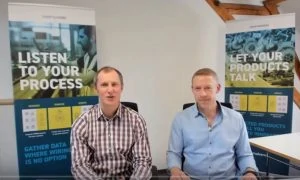In the 1st part "The most important factors for a good LoRaWAN radio range" of our range series we have dealt with the theoretical factors that influence the range of a LoRaWAN. This isolated consideration of radio links between two points is now followed in part 2 by the reference to practice. Concrete examples from real applications are presented and evaluated.
The special properties of LoRa, especially the low susceptibility to interference, the low path loss and the very good building penetration, enable very high ranges even in urban environments. Even with modern, software-supported simulation methods, the actual range and coverage of a radio network can only be calculated to a limited extent - which applies not only to LoRa, but to any radio technology. Therefore, especially in the first phase, range and penetration tests are an important tool to better understand the behavior of radio waves in reality in different environments.
In this article we refer to three documented tests in different scenarios:
- Urban environment: 5 different test cases
- LoRaWAN in a suburban area
- Penetration of basement rooms for reading meter data
In general, only few experimental range tests are well documented in the literature.
This is supplemented by three calculation models for network coverage:
- LoRa signals in forest areas
- indoors and
- under water - admittedly very special, but nevertheless interesting, as we think.
In addition, we incorporate our own experience from previous reach and penetration tests in various customer scenarios and evaluate the documented tests and calculation models. In a separate article we will go into these results in more detail (planned publication Q1 2018).
LoRaWAN Starter Kit
Scenario 1: LoRaWAN in the centre of a European city
Most of the cities for which we have data have classic European building characteristics: roughly described there are only a few very tall buildings, some tall buildings and many that are only a few storeys high. These are not megacities with almost exclusively high buildings in the city centre.
In over 20 range tests in urban environments, we were able to achieve coverage of well over 10 km with exposed gateway locations. Individual measurements will be discussed in the following.
In a publication by the hardware supplier Libelium, the test setup and the ranges achieved with it were quite well documented in Zaragoza [see also source]
Description of the test setup:
- These were so-called Non Line of Sight (NLOS) connections in urban environments
- Spreading Factor 12 (maximum range)
- maximum output power: 14 dBm
- Frequency channel: 868 MHz band
- the receiving Gateway Rx was mounted on the roof at a height of about 12 meters
- the transmitter unit (Tx) changed position between 5 control points.
- At each point 50 transmission attempts were carried out

We have summarized the properties of the control points and the results of the measurement series in a list:
- Checkpoint 1: The signal passes through four buildings. Three high-rise buildings and one low building do not allow a line of sight along this route. There is also a clear path to the receiver. The range is 830 m. 96% of the transmitted data packets were received.
- Checkpoint 2: The signal passes through 14 buildings. In this case, there is a large group of low-rise apartment buildings near checkpoint 2. There is also a block of flats on the way to the receiver. The range is 960 m. 92% of the transmitted data packets were received.
- Checkpoint 3: The signal passes through six buildings. This point is located on the side of a large square in the area. The path passes through a large residential building and then some industrial buildings. The range is 1070 m. 98% of the transmitted data packets were received.
- Checkpoint 4: The signal passes through 14 buildings. This is the largest path. This point intersects with four tall apartment buildings. Then follows an open space without obstacles before it reaches a group of high-rise buildings again. Finally, several industrial buildings are found before the path to the receiver is terminated. The range is 1530 m. 98% of the transmitted data packets were received.
- Checkpoint 5: The signal passes through six buildings. This checkpoint is separated from the receiver by several industrial buildings which have no free space between them. The range is 863 m. 100% of the transmitted data packets were received.
| Checkpoint | Distance to the gateway (Rx) | Number of buildings between Tx and Rx | Success rate |
| 1 | 830 m | 4 | 96 % |
| 2 | 960 m | 14 | 92 % |
| 3 | 1070 m | 6 | 98 % |
| 4 | 1530 m | 14 | 98 % |
| 5 | 863 m | 6 | 100 % |
Evaluation of the result and practical suggestions for optimisation
The fact that not always 100% of the packets are transmitted is countered by the LoRaWAN standard with the usual methods: If necessary, the communication can be configured in a way that messages have to be confirmed by the receiver (so-called Confirmed Up- and Downlinks), i.e. the sender waits for an acknowledgement of receipt and sends the data again after a defined period of time if this acknowledgement is missing. The values achieved here can all be regarded as non-critical.
There are 3 key strategies to optimize reach and coverage
- In regular LoRaWAN applications, larger coverage and ranges can be achieved by accepting lower success rates, i.e. the ranges in the test could have been increased by accepting single failed transmissions and then retransmission.
- Network topologies with redundant gateways from different directions result in higher network coverage with the same or improved success rate.
- The illumination in the area could be significantly improved by positioning the gateway higher. The gateway in this test was only installed at a height of 12m. The so-called Hata propagation model, a simple radio propagation model for calculating the path loss of radio waves outdoors, describes the relationship between range and height very clearly: If the gateway location is increased from 12 to 30 meters, for example, the original range almost doubles (see graphic below, source: Kerlink, Kerlink Manual LoRa IoT Station v2.17).

In one of our customer projects, three gateways (5, 10 and 45 meters high) were installed in a large German city with over 150,000 inhabitants in a first phase and various range and penetration tests were conducted. A summary of the results can be found in the table below.
| Height | Number of data points | Max. Range | Range Average | |
| gateway 1 | 5 m | 444 | 5.53 km | 1.43 km |
| gateway 2 | 10 m | 762 | 16.27 km | 3.3 km |
| Gateway 3 | 45 m | 1619 | 20.99 km | 2.92 km |

The results achieved there exceed the results of the above-mentioned construction, especially due to the location with the very high gateway. We will publish the detailed results of this and other tests in early 2018. (Please register at the end of the article to receive a message when the results are published).
Scenario 2: LoRaWAN in a suburban area
In "A Study of LoRa: Long Range & Low PowerNetworks for the Internet of Things" by Aloÿs Augustin, Jiazi Yi, Thomas Clausen and William Mark Townsley, a range test conducted in a Paris suburb is well documented.
Test setup
The gateway was located on the 2nd floor of a house, right in front of the window. On the test day the humidity was 55% with an outside temperature of 15°C. Five different test points were selected, the distance to the gateway was 650 m to 3,400 m.
The terminal device was located in a car during the tests. The transmission power of the terminal device was set to 14 dBm, which is the default value.
To test the performance of different spreading factors, packet confirmation and retransmission were switched off. The connection check was also disabled, so that the spreading factor did not change even if there was a packet loss. - By default the LoRaWAN network adjusts the spreading factor to the connection quality.
The spreading factors 7, 9 and 12 were chosen for these tests. In each test, about 100 packets with a sequence number were transmitted to the network server.
Result
The higher spreading factors have a better coverage than previously described - at an SF value of 12, more than 80% of the packets were received at 2,800 m, while no packet was received at an SF of 7. The gateway was located on the second floor at about 5 m above the ground. The checkpoint was 2,800 m away, directly behind a building with seven floors. At a distance of 3,400 m, the coverage was only provided by SF12. The price for the high transmission rate using the high spreading factor is a much lower bit rate. On the other hand, the network coverage using low spreading factors is much lower.
For a permanent installation, the positioning of the gateway at a more favourable location would have to be considered. For the most extensive coverage possible, the positioning in a building on the 2nd floor is certainly suboptimal.
Scenario 3: LoRaWAN for reading water meter, gas meter and electricity meter in a basement
In the previously mentioned source of Libelium, a scenario is also mentioned that involves covering near the cellar. Unfortunately the basic conditions are only roughly outlined: In this measurement the transmitter was located outside the first floor of an office building at a height of about 3 meters. The receiver was located below the ground floor, at a garage entrance. There was no line of sight between the points and the LoRaWAN range achieved was 206 m. Much more is not documented.
Much more revealing are the results that we ourselves have achieved together with customers in penetration tests. Here again, we would like to briefly outline three examples (further details will follow in the coming weeks).
In the first test, data was transmitted over a distance of 998 meters from a shaft embedded in the road to a gateway at a height of 35 meters to network a water meter. The connection could be established despite the metal cover of the shaft. To test real conditions, a delivery van was also parked on the shaft, but signals could still be received with satisfactory quality.
At another customer, penetration tests were carried out in five different cellar rooms over a period of several days within a radius of 4 km.
| 1 | 2 | 3 | 4 | 5 | ||||||
| Distance | Success rate | Distance | Success rate | Distance | Success rate | Distance | Success rate | Distance | Success rate | |
| Gateway 1: 5 m | 3600 m | 0% | 2700 m | 0% | 1600 m | 0% | 5100 m | 0% | 1100 m | 0% |
| Gateway 2: 10 m | 4000 m | 0% | 3400 m | 0% | 3800 m | 1% | 2800 m | 0% | 4100 m | 25% |
| Gateway 3: 45 m | 800 m | 82% | 1800 m | 4% | 2100 m | 86% | 2600 m | 77% | 3900 m | 55% |
The table shows the respective distance to the gateway and the corresponding success rate. The individual locations were tested over several hours or days with several thousand transmission attempts. Cellar rooms with their respective adversities (reinforced concrete, 2nd basement, steel cellar doors etc.) can be networked even over long distances. Here the height of the gateway plays a decisive role.
In addition, this is based on application cases that require a renewed transmission of values if the success rate cannot always guarantee a direct transmission.
In another installation in a neighbourhood, 2 redundantly installed gateways are used to transfer data from basement rooms to an energy management system, also with good connection quality. Read more about this in our blog post "LoRaWAN - A practical example".
These examples show that LoRaWAN offers great potential for utilities and billing companies if it is used to transfer data from water, gas, heat or even electricity meters from the basements to billing and monitoring systems.
Model calculation 1: The indoor coverage of LoRaWAN
When planning wireless network coverage, planning requirements for indoor and outdoor areas are usually included. Accordingly, statistical propagation models have been developed to support area planning. The model of Davide Magrin is discussed here (see Network level performances of a LoRa system). LPWAN communication networks like LoRaWAN are essentially PMP, with sensors installed on different floors, including basements. These requirements force network planners to develop digital 3D maps and apply path-specific, deterministic propagation models.
There are several approaches to modelling the losses caused by external and internal walls of buildings. For example, in one of the available models the influence of buildings on the path loss of LoRaWAN networks is determined by the following units:
- losses through the outer walls of buildings, hereinafter referred to as EWL.
- Losses through the interior walls of buildings;
- Increased power consumption due to the fact that one unit is located above the first floor.
This model can be used as an approach for determining path losses through buildings as follows:
(a) losses through the external walls of buildings:
The EWL for a device is modeled as a uniform random variable that takes on values in a certain range. Due to the fact that two devices do not necessarily experience the same path loss through external walls, the difference in materials and thickness of external walls in a large number of different buildings is to be modeled. Three possible ranges of values and the probability that a node will experience this type of loss are given in Table 2.
| Probability | Range r |
| 0,25 | [4, 11] dB |
| 0,65 | [11, 19] dB |
| 0,1 | [19, 23] dB |
Table 2: A possible value range of the EWL and the probability
(b) losses through the internal walls of buildings:
The influence of the inner walls is expressed as the maximum value between two values. The first value represents the loss due to the number of inner walls:
Gate1 = Wi - p, (5)
where
Wi = evenly distributed in the [4, 10] dB range and
p = number of internal walls separating the transmitter from the receiver.
It is assumed that p = 3 for 15% of the units and that the rest of the units are evenly distributed among the values of p = {0, 1, 2}.
The second value needed to model the path loss through inner walls is
Tor3 = αd, (6)
where
α = 0.6 dB/m - the coefficient of penetration depth and
d-value evenly distributed in the range [0, 15] m.
(c) increase in the power received:
Finally, the GFH contribution describes the better reception achieved by antenna height. This parameter is determined by the following expression:
GFH = n*Gn, (7)
where
Gn = 1.5 dB/storey - the gain due to the increase in height by one storey
n = number of storeys, is evenly distributed over the values of n = {0, 1, 2, 3, 4}.
These three parameters define the total building loss for an indoor unit as follows:
LGebäude(dB)= EWL + max(Tor1, Tor3) - GFH (8)
In the real environment, some tests with different scenarios indicate that it may also make sense to install a gateway on the same roof of a multi-storey building with the basement or basement room to be networked - even if, according to the calculation of the total loss for the direct path through several floors and walls, no penetration could theoretically be guaranteed.
Here, the direct path through the building is rarely decisive, but rather the reflection on neighbouring buildings. Although the path is longer, the attenuation is limited to 1-2 walls and the reflection factor of the building envelope.

Model calculation 2: LoRaWAN range in the forest
In rural and semi-rural regions, trees in particular can lead to considerable path losses. In addition, a large number of variables must be taken into account: For example, the tree species, whether the tree is wet or dry and, in the case of deciduous trees, whether leaves are present or not.
Isolated trees are usually not a big problem, but a dense forest can be a challenge. The attenuation depends on the distance the signal has to travel through the forest and increases with frequency.
A brief analysis of the influence of forests on the range of a wireless network is given in CCIR report 1145 "Propagation over irregular terrain with and without vegetation" (International Telecommunication Union, Geneva, 1990) and recommended in ITU-R P.833-4. Figure 1 summarizes this ITU-R P.833-4 recommendation, which examines the influence of forest areas on attenuation.

The attenuation is in the range of 0.05 dB/m at 200 MHz, 0.1 dB/m at 500 MHz, 0.2 dB/m at 1 GHz, 0.3 dB/m at 2 GHz and 0.4 dB/m at 3 GHz. Even at lower frequencies, attenuation is slightly lower with horizontal polarization than with vertical polarization. This difference does not apply to frequencies above 1 GHz. This means that this criterion influences the path loss when the signal has to penetrate several hundred meters of forest.
Fortunately, a considerable part of the propagation above the treetops also takes place by diffraction, especially if you mount the antennas almost at treetop height or if you can keep a distance from the forest.
So all is not lost if your network is deployed near and above a forest. In some cases this is even necessary (e.g. when measuring water levels in a wooded area). With a link budget of 150dB (see blog post 1) you can theoretically expect ranges of 750-1500 meters directly through dense forest. In a customer scenario for water level measurement, a gateway was installed at treetop height (approx. 10 meters) and a total of 8 locations within a radius of 500-2500 meters were tested. The transmitters were installed at a height of 30 cm. All locations had good to very good success rates, so that higher ranges without visual contact (NLOS) can be achieved by diffraction as described.



A LoRaWAN achieves network coverage in rural and semi-rural areas, which are partially covered with vegetation, with LOS (Line Of Sight) connections, the range is more than 20 km.
LoRaWAN Starter Kit
Model calculation 3: Damping of water
The attenuation for radio waves is very high in water. It increases both with an increase in the average conductivity and the signal frequency. This can be calculated by the following formula:
α=0.0173√ (fσ) (9)
...means..:
α = attenuation (in dB/meter)
f = frequency in Hertz and
σ = conductivity in mhos/meter
The conductivity of seawater is between 2 and 8 mhos/meter, depending on the salinity. In order to be able to communicate there at all, it is necessary to use VLF (very low frequencies, long waves of 10 to 30 kHz), with attenuation in the order of 3.5 to 5 dB per meter.
So how would the relationships described affect the LoRaWAN network? For example, if you have a node that can transmit 5 km through the air with line of sight on 868 MHz frequency, how far would it go under water?
α = 0.0173√ (fσ) = 0.0173√ (8680000*2) = 720dB/m.
The power transmission balance of the LoRaWAN network depends on the environment, but for this example we assume it is 150 dB. Under water, you could communicate with it over a distance of about 20 cm.
If you have specific questions on this topic, please feel free to contact us at any time.
With this admittedly rather theoretical consideration, the second part on the subject of the range of LoRaWAN ends. The first part of the article, which describes the most important factors that influence the range of wireless networks, can be found elsewhere in our blog.






